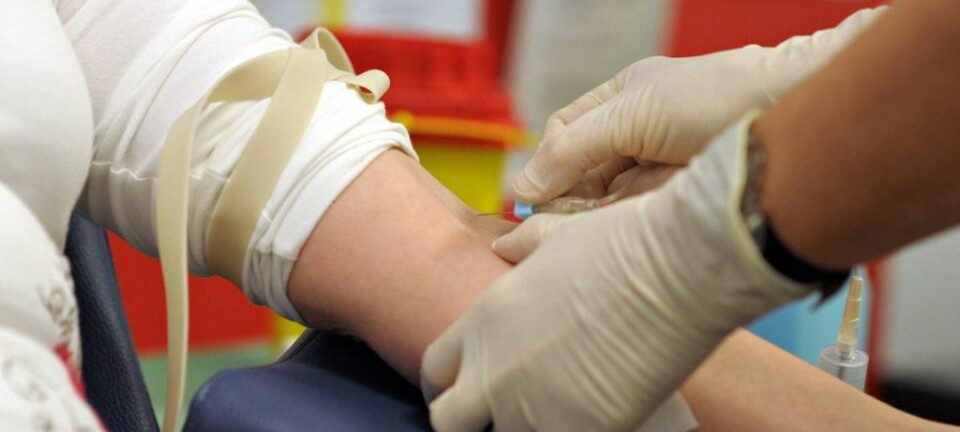
Sudden cardiac death risk can now be measured
Scientists can now measure the risk that patients with a hereditary coronary disease have of suffering sudden cardiac death.
Hypertrophic cardiomyopathy (HCM) is a deadly heart disease caused by faulty genes. But not all patients die from it.
A new discovery may offer peace of mind for those who are not in mortal danger, and it can help doctors identify those who at some point will require treatment.
”If your uncle collapses due to HCM, there is a risk that you and the rest of your family also carry one of the gene mutations that cause the disease,” says Michael Christiansen, MD, who researches into molecular medicine at the State Serum Institute in Copenhagen, Denmark.
”Up to now we could only determine whether individual family members had a faulty gene. But we could not say anything about the likelihood that it would result in this dangerous disease. We could e.g. not say exactly what kind of treatment a 15-year-old would require in the future, but we have now become a bit better at doing all this.”
Certainty at last for people with faulty genes

Together with colleagues from the Copenhagen University Hospital, the State Serum Institute researchers have spent the past 15 years examining a group of patients for a wide variety of gene mutations that can cause diseases.
The latest research does not only focus on finding mutations, but also on finding biomarkers that tell the researchers how dangerous the mutations are.
The HCM disease can occur if you have a mutation in at least 13 genes. If an examination reveals that you have a gene mutation, the new discovery can make it easier for doctors to determine whether or not it is life-threatening.
Your DNA determines the risk
The risk of the disease breaking out depends on the DNA in your heart cells’ mitochondria, i.e. the parts of the heart cell that produce energy for the cell.
Up to now we could only determine whether individual family members had a faulty gene. But we could not say anything about the likelihood that it would result in this dangerous disease. We could e.g. not say exactly what kind of treatment a 15-year-old would require in the future, but we have now become a bit better at doing all this.
Having examined 91 patients, the researchers found that the patients had either an extra high risk or an extra low risk of developing the disease, depending on whether they had mitochondrial DNA of the types known as ‘Haplogroup H’ or ‘Haplogroup J’.
- Some 45 percent of all Danes – with and without faulty genes – carry Haplotype H, which according to the new study increases the risk of developing HCM.
- Around 10 percent carry the risk-reducing Haplogroup J.
- The remaining 45 percent do not carry a special DNA that increases or reduces the risk of developing HCM.
Knowing this, doctors will now be better at assessing the risk of a faulty gene causing HCM.
”We have shown that patients with Haplogroup H are six times as likely to develop the disease as those with Haplogroup J,” says Christiansen.
We have shown that patients with Haplogroup H are six times as likely to develop the disease as those with Haplogroup J.
“On the other hand, the risk for patients with Haplogroup J is three times as low if they do not have one of the two biomarkers.”
The problem: the heart produces too many waste products
He explains that people with Haplogroup H make up a special risk group, as their hearts produce excessive amounts of waste products. And if you have one of the 13 faulty genes, the heart will find it difficult to handle all these substances.
”The heart is a very energy-intensive organ, which is why it relies on its mitochondria to produce all this energy,” he says.
”The mitochondria produce energy and also so-called Reactive Oxygen Species (ROS), which can damage the heart cells if too many of these are produced. Our theory is that Haplogroup L mitochondrial DNA produces particularly many ROSs, and when combined with a faulty gene it can be fatal.”
Method may prevent athletes form dropping dead
There is a possibility that in the future we can also screen elite athletes, so we can see if they have Haplogroup L mitochondrial DNA and thus an increased risk of sudden death. But further studies are required to determine if this is possible.
We hear stories about top athletes dropping dead on the track with a bad heart. The new discovery may also help these people in the future.
These athletes often suffer from an enlarged heart, which in many ways is similar to HCM. They have typically trained so intensely that their hearts have become unnaturally large – in some cases so large that it is life-threatening.
”There is a possibility that in the future we can also screen elite athletes, so we can see if they have Haplogroup L mitochondrial DNA and thus an increased risk of sudden death. But further studies are required to determine if this is possible,” says Christiansen.
”We think it’s incredibly exciting to see that the potential could extend beyond sick people to also cover athletes. The diseases are different, but we believe that with more research we can help athletes – also to organise their training so that they avoid developing an enlarged heart.”
--------------------------
Read the Danish version of this article at videnskab.dk










